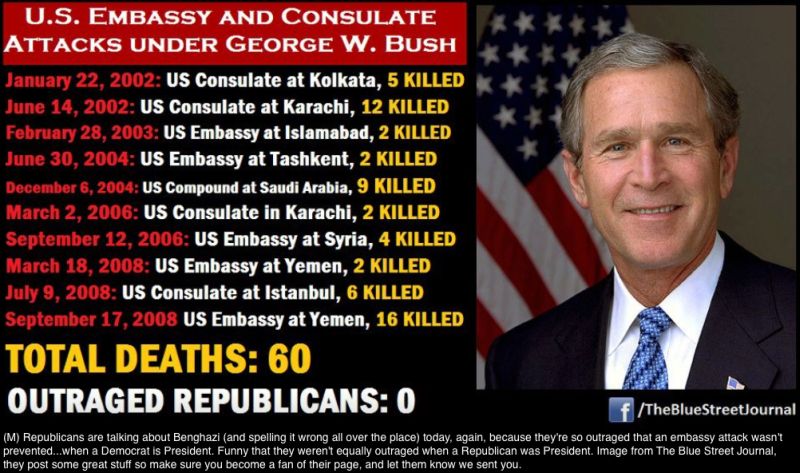Reality is ...
Carolina Naturally is read in 191 countries around the world daily.
Today is National Chicken Dance Day
Don't forget to visit our sister blog!



Any broadcast station employee who has accepted or agreed to accept payment for the airing of program material, and the person making or promising to make the payment, must disclose this information to the station prior to the airing of the program.Wouldn’t it be nice if the FCC rule turns out to be the ticket for Dimbulb’s demise? And isn’t it ironic? Wingnuts are always preaching “Free Market.” Once again, wingnut hypocrisy rears its ugly head.


Latino workers continue to be at increased risk of job fatalities, with a fatality rate of 4.0 per 100,000 workers in 2011. There were 749 fatal injuries among Latino workers, up from 707 in 2010. Sixty-eight percent of these fatalities (512 deaths) were among workers born outside the United States. Workers who are undocumented may be at particular risk facing abuse and exploitation and fearing retaliation if they raise concerns about unsafe working conditions.


For FY 2012, the median initial total penalty in fatality cases investigated by federal OSHA was $6,625 ...Bad, right? Just $6,625 when someone died? It gets worse: After settlement, the median penalty was down to $5,175. And again, that's when the federal government is in charge. OSHA state plans have an initial median penalty of a paltry $4,900, which is knocked down to $4,200 by settlements. Criminal penalties? Forget about it:
They are limited to cases in which a willful violation results in a worker death and are misdemeanors. Since 1970, only 84 cases have been prosecuted, with defendants serving a total of 89 months in jail. During this time there were more than 390,000 worker deaths. By comparison, in FY 2012 there were 320 criminal enforcement cases initiated under federal environmental laws and 231 defendants charged, resulting in 79 years of jail time and $44 million in penalties—more cases, fines and jail time in one year than during OSHA’s entire history.It's a slight overstatement to say that the government is basically giving employers free rein to kill workers. But it's not the outrageous hyperbole it should be in any kind of civilized society. Here's what some of those deaths look like. Grain smothering killed 26 in 2010:
“It created kind of a quicksand effect,” Piper said. “So we worked around it and we were aware of it, and after a while … Wyatt ended up getting caught up in it and started screaming for help. Me and Alex went in after him, and we each grabbed one side of him under his armpits and started dragging him out, and got pretty close to the edge of the quicksand and then we started sinking in with him.” [...]These deaths, like so many others on the job, are horrific and preventable, yet employers tell workers to take the risks, and don't suffer real consequences for the deaths.
“And it was just me and Alex standing there up to our chests completely, just trapped in the corn,” Piper said. “And Wyatt was underneath. I was hopeful that he was still alive, but at this point I’m pretty sure that he suffocated pretty quickly. The pressure underneath the corn was just too great.” [...] The corn kept flowing around Piper and Pacas. “After a little bit [Pacas’s] hand was sticking up above the grain and I could just see his scalp, and his hand stopped moving,” Piper said. “And the corn was up to my chin at that point. And it was slowly trickling down … and I was about to be covered, too.”

Like a lot of budding collectors of the inexpensive, entry-level guitars of the 1950s and ’60s, Eichen found himself in a lot of pawn shops. “During my residency and afterward, whenever I had some spare change I would go to a pawn shop wherever I could find one. If I was traveling to a conference in any state, when I get off the plane, the first thing I’d do is go to a pawn shop in the worst part of town and see what kind of guitars were available. Harmonys were always on my list, but then I spread out to Supros, Danelectros, Airlines, and Silvertones. Anything made by Valco or Kay. They had magical tones.”



Yet growing meat in the laboratory has proved difficult and devilishly expensive. Dr. Post, who knows as much about the subject as anybody, has repeatedly postponed the hamburger cook-off, which was originally expected to take place in November. His burger consists of about 20,000 thin strips of cultured muscle tissue. Dr. Post, who has conducted some informal taste tests, said that even without any fat, the tissue “tastes reasonably good.” For the London event he plans to add only salt and pepper.
But the meat is produced with materials — including fetal calf serum, used as a medium in which to grow the cells — that eventually would have to be replaced by similar materials of non-animal origin. And the burger was created at phenomenal cost — 250,000 euros, or about $325,000, provided by a donor who so far has remained anonymous. Large-scale manufacturing of cultured meat that could sit side-by-side with conventional meat in a supermarket and compete with it in price is at the very least a long way off.“This is still an early-stage technology,” said Neil Stephens, a social scientist at Cardiff University in Wales who has long studied the development of what is also sometimes referred to as “shmeat.” “There’s still a huge number of things they need to learn.”
There are also questions of safety — though Dr. Post and others say cultured meat should be as safe as, or safer than, conventional meat, and might even be made to be healthier — and of the consumer appeal of a product that may bear little resemblance to a thick, juicy steak.

Scientists have identified 100,000 pieces of retrovirus DNA in our genes, making up eight percent of the human genome. That’s a huge portion of our DNA when you consider that protein coding genes make up just over one percent of the genome.Carl Zimmer of The Loom blog over at National Geographic explains how one such viral gene could be awaken (by infection by HIV, for example) after lying dormant for six million years in our DNA:
Markovitz and his colleagues analyzed the sequence of the virus genes they found in the patients with HIV. The genes belonged to a family of endogenous retroviruses called HERV-K, but they were not quite like any known HERV-K virus previously found.Read the rest over at The Loom.
The Michigan scientists wondered if this new HERV-K virus was hidden in the human genome. They checked the most complete draft of the human genome and couldn’t find a match. They knew that the human genome sequence was only about 95% finished, so they turned instead to the chimpanzee genome, on the off chance that the virus had infected the common ancestor of humans and chimpanzees over six million years ago. Bingo: a single copy of the virus turned up in the chimp genome. They dubbed it K111.
Having found this match, the scientists decided to return to the human genome and search for K111. They isolated DNA from their HIV patients, as well as from healthy people. They then split apart the two strands of the DNA and added a short piece of DNA that would bind to K111, should it be lurking there. In all 189 of their subjects, the scientists found the virus’s DNA.



Here are the basic facts: on 5 May 1945—five days after Hitler’s suicide—three Sherman tanks from the 23rd Tank Battalion of the U.S. 12th Armored Division under the command of Capt. John C. ‘Jack’ Lee Jr., liberated an Austrian castle called Schloss Itter in the Tyrol, a special prison that housed various French VIPs, including the ex-prime ministers Paul Reynaud and Eduard Daladier and former commanders-in-chief Generals Maxime Weygand and Paul Gamelin, amongst several others. Yet when the units of the veteran 17th Waffen-SS Panzer Grenadier Division arrived to recapture the castle and execute the prisoners, Lee’s beleaguered and outnumbered men were joined by anti-Nazi German soldiers of the Wehrmacht, as well as some of the extremely feisty wives and girlfriends of the (needless-to-say hitherto bickering) French VIPs, and together they fought off some of the best crack troops of the Third Reich. Steven Spielberg, how did you miss this story?You can read the story in an article at The Daily Beast, as excerpted from Stephen Harding's new book The Last Battle: When U.S. and German Soldiers Joined Forces in the Waning Hours of World War II in Europe. More


So what was causing the crumbling? James presents a new explanation: thermal movement -- that is to say the expansion and contraction of the limestone with temperature fluctuations -- has ground down the rocks and shifted their positions.Problem was, as ancient Egyptians became better at constructing pyramids, the voids between the stones disappeared and the structure were less able to withstand the thermal expansion and contraction of the limestone.
He estimates that the motion can amount to 1¼ inches per 328 feet. As the stones move, dust and sand would fall from the stones and fill in the spaces between them. The spaces into which they could contract at night would shrink, and over time they would be pushed out of position. "Multiply this endless movement by the number of days that the pyramid has been erected and you have the reason why all the outer casing has moved to the extremities, where it has buckled or displaced against blocks moving in the opposite direction and then fallen off," James writes. "It may then have been picked up by opportunists and removed from the site.?"

